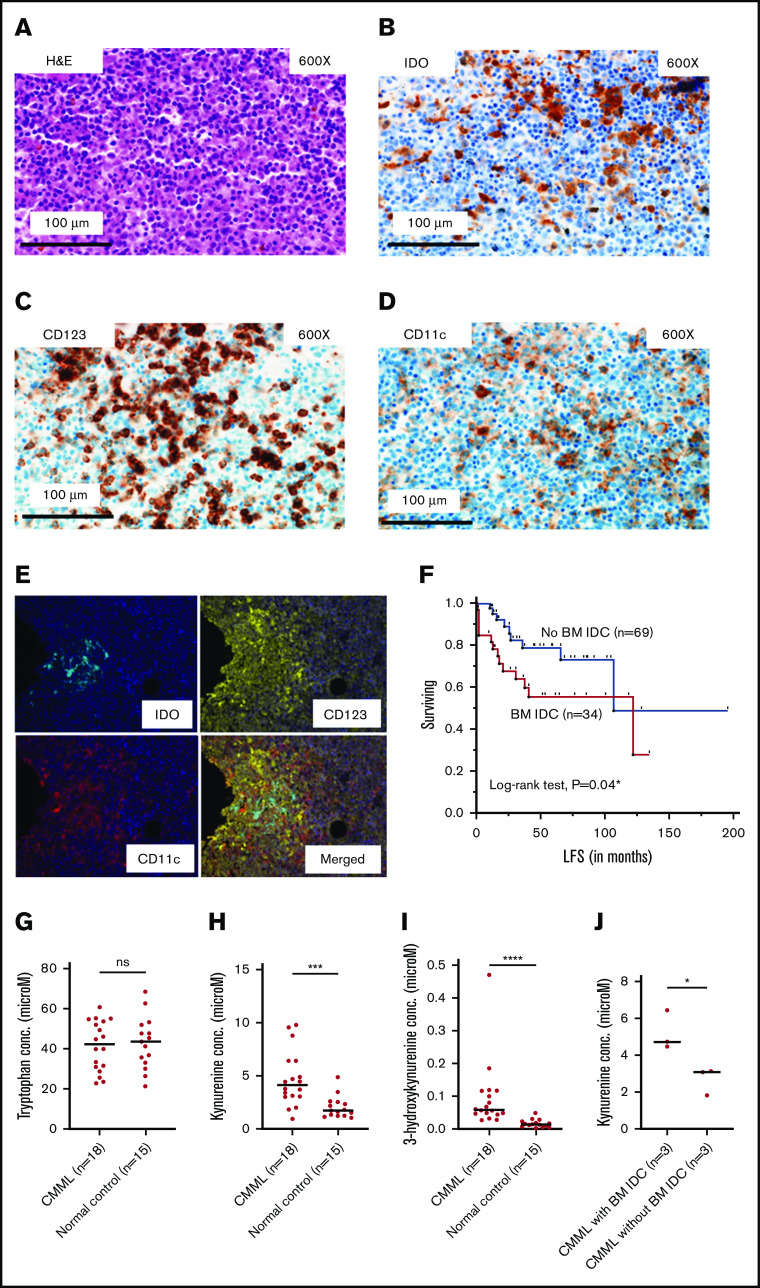Figure 1.
IDC populations are present in the CMML BM microenvironment, associate with adverse AML-free survival, and associate with metabolic signatures of systemic IDO activity. (A) Hematoxylin-and-eosin staining of an area of CMML BM with IDC. (B) IDO staining. (C) CD123 staining. (D) CD11c staining. (A-D) Original magnification ×600; scale bar, 100 μm. (E) Multiplex immunostaining showing clustering of IDO expression with CD123 and CD11c stains in a CMML BM, confirming expression in a DC population. Original magnification ×20. (F) Kaplan-Meier estimate of AML-free survival (LFS) in CMML patients with IDC at any disease time point (n = 34) vs CMML patients without IDC (n = 69; median, 122 vs 107 months; *log-rank P = .04). Although the median LFS is paradoxically higher in the IDC group due to late events that make the group reach the median, this is a statistical aberration. The survival curves clearly separate early and stay separated for the majority of follow-up (with the IDC group showing inferior survival; lower curve in red). Consequently, the corresponding hazard ratio from a Cox proportional hazard model is significantly greater than 1.00 (hazard ratio, 2.3 [95% CI, 1, 5.4; *P = .049], panel F, supplemental Table 1). (G-I) Similar tryptophan (42.4 vs 43.6 μM; P = .9), higher kynurenine (4.1 vs 1.8 μM; ***P = .0006), higher 3-hydroxykynurenine (0.06 vs 0.01 μM; ****P < .0001) concentrations in CMML patients (n = 18) and normal controls (n = 15), respectively, as evaluated by LC-MS in plasma samples. (J) Higher kynurenine concentration in diagnostic plasma samples (n = 6) of CMML patients with vs without BM IDC (4.7 vs 3 μM; *P = .049); data included for samples in which IHC and LC-MS assessment was done at the same time point. ns, not significant.

